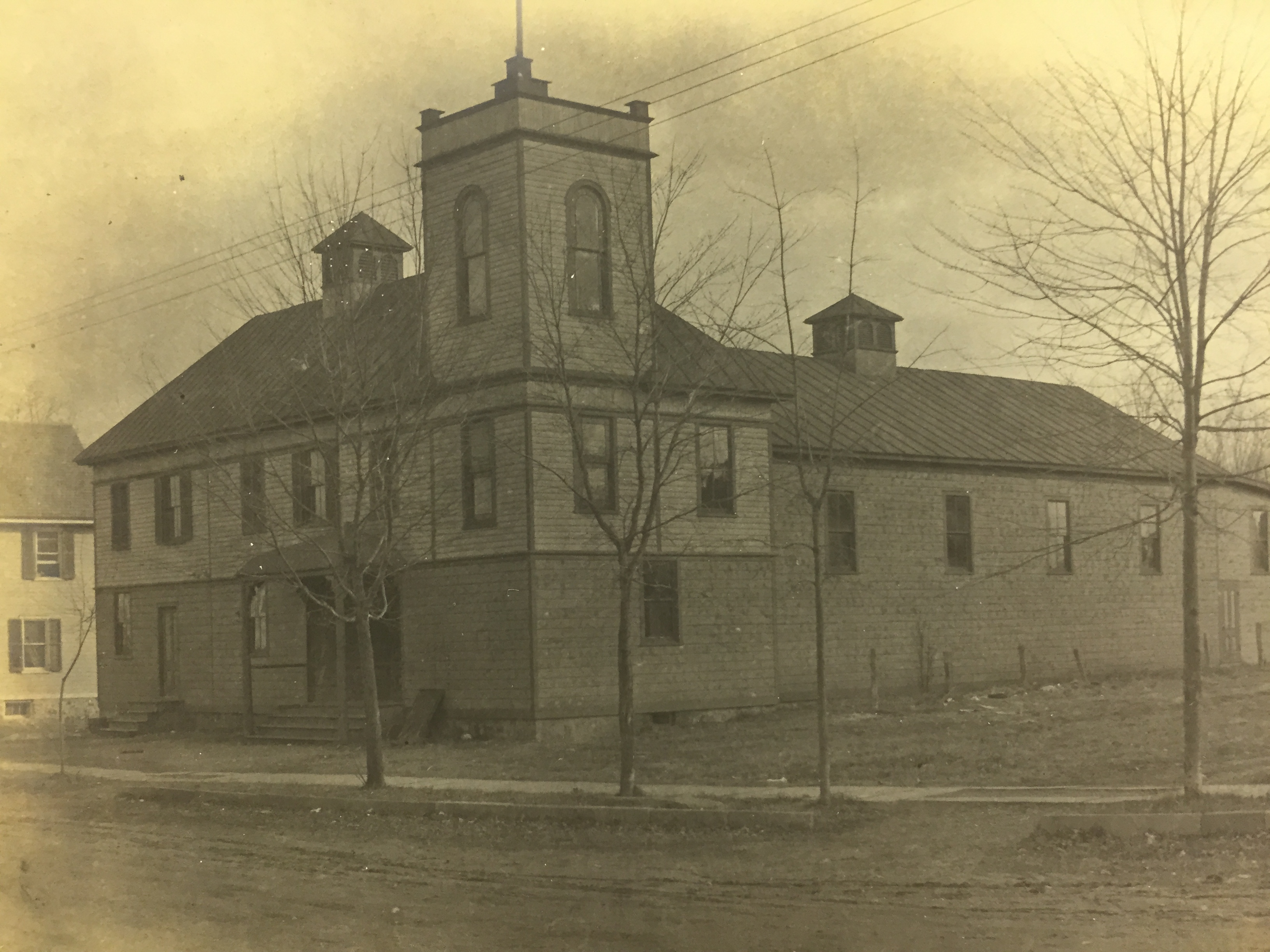
If you were a voter in Park Ridge in the 1890s, this is where you would have gone to cast your election ballot. The building shown at right, Foresters’ Hall, was located on Kinderkamack Road (then called Magnolia Avenue) at the head of Madison Avenue.
[slideshow_deploy id=’899′]
The Ancient Order of Foresters had formed a chapter in Park Ridge in February of 1889. The organization subsequently constructed, at a cost of $3,000, a two-story frame building capable of seating 200 people, and it was rented out for public and private affairs. In short order, Foresters’ Hall became an important meeting place in town. The fire department held its organizational meeting there in 1898. Local groups used the space for fund-raisers. The first motion pictures to be shown in the Pascack Valley were screened at this location.
In 1894, citizens met on the second floor of Foresters’ Hall to cast their votes, 95-49, for Park Ridge to break away from the Township of Washington to form a borough.
Later that year the election of the first mayor took place, also at Foresters’ Hall. Park Ridge’s male population (for it was only men who could legally vote in elections in those days) came out in full force to cast their ballots in what was an exceedingly contentious election.
The choices for mayor highlighted the ideological divide that existed in Park Ridge at the time. There was the People’s Party, whom the opposition condescendingly dubbed “The Hayseeders,” the population of old farming families that wanted to keep life as it was and who had been opposed to incorporating as a borough. Their choice for mayor was Dr. Henry C. Neer, the local physician. Then there was the Citizens’ Party, the newly planted population of commuters who favored better schools and expanded services. Their choice for mayor was James Wield, a bobbin manufacturer.
Election Day was an intense affair, and the coverage even made it into New York newspapers.
The New York Evening World reported, “Tuesday’s contest between the ‘Hayseeders’ and ‘Commuters’ was of the hottest kind, and so close that neither side knew which one was successful until the last ballot was counted. John P. Herring was the last man to vote. He voted the ‘Hayseed’ ticket and Dr. Neer was elected by one vote.”
The World goes on to say that Dr. Neer’s friends were so jubilant over his success that they went to Rockland County, retrieved an old Revolutionary War cannon, brought it home and shot it off repeatedly in downtown Park Ridge.
Neer’s term ended up being the shortest in borough history. The Citizens’ Party successfully had the election results invalidated, and a new vote took place a couple of months later. This time, Wield was the winner. Neer succeeded him, serving as mayor the following year from 1895-1896. While the People’s Party fought hard, we all know which way of life won out in the end.
The former location of Foresters’ Hall was eventually replaced by stores and apartments.
–Kristin Beuscher
[slideshow_deploy id=’899′]
